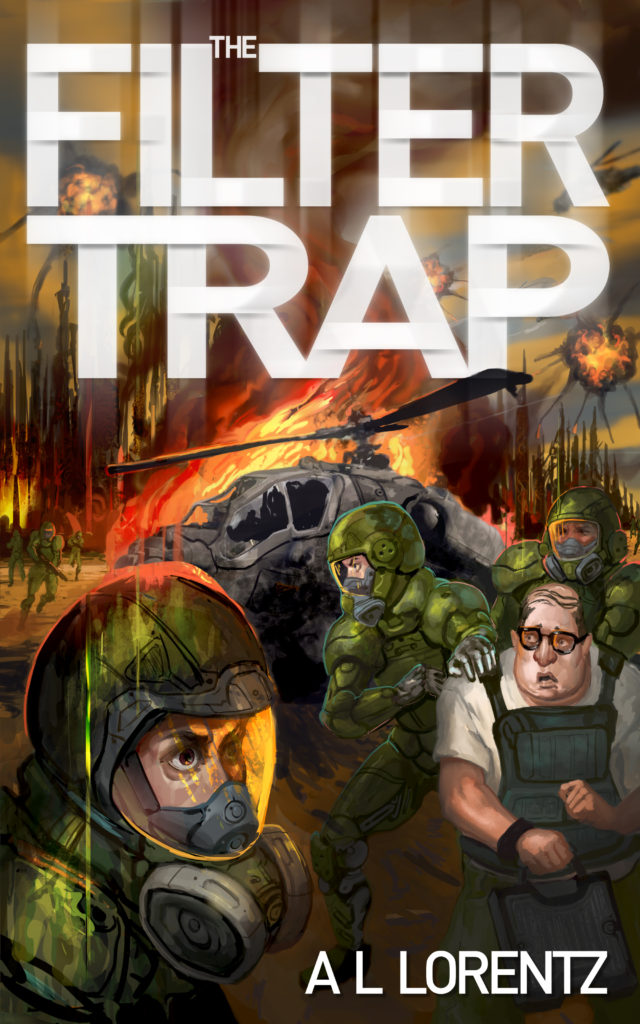A science fiction novel available on amazon.

Imagine looking up at night to find new stars in the sky…and none of the old ones.
Set in the present-day, this military sci-fi action-packed epic follows scientists and soldiers as they race to find the cause of a world-changing cosmic Event that continues to ravage their planet. Eventually leading to questions of conscience, consciousness, and consequences, The Filter Trap examines Fermi’s Paradox in a way you’ve never read before.
After self-publishing Dawn of Two Stars I was eager to work on one of the multitude of stories that had been eating away at me during the lengthy process of completing that earlier book. In fact, the process of publishing Dawn of Two Stars took so long, that I began to write the outline and first draft for The Filter Trap before Do2S was even published. Otherwise, I never would have been able to release an almost 500-page book only eight months after the last.
One thing I was intent on was building a contemporary science fiction story, one that could reference and make use of the society we live in now. In many ways, writing future fiction is too easy. While the world still has to be consistent and believable, the author is free to invent as many deus ex machinas of technology as they like to propel their story. After living in that world for two years while writing the previous book I liked the challenge of dealing with first contact, aliens, war, disaster, and culture clashes in the confines of a 21st century understanding of physics and technology (no transporters or near light speed propulsion here!).
Of course, that was a secondary desire to portraying the initial concept, which I still believe is one not explored by any other book and won’t spoil for you.
When I began writing the story spiraled out into what I thought may become a series of at least four novellas. Beta readers convinced me to remove tens of thousands of words of fluff and put the core story into one book. This was a welcome change as it let the characters breathe the same air a little better and provide opportunities for interaction that may have been confusing in a series where each piece (and character arc, etc.) must stand alone.
I still decided to keep the four initial prologues I wrote at the outset of the project. Each story shows how what is described in the novel as “The Event” is perceived by people on different parts of the Earth. It was this that intrigued me so much about the concept originally, as I wondered how a cataclysmic event that may or may not be of natural origin would be perceived through a 21st-century lens.
My friend, Aaron Firem, again agreed to do a cover on a steep discount. At that time (2015) I had a tentative title of Divided Stars and wanted a more abstract (and faded 60s “pulp” looking) cover hinting at the concept and central mystery of the piece.

Eventually, I decided I needed to move away from this earlier design aesthetic and look for something more intriguing to a potential reader. The new cover, by artist Ben Roque, illustrates a terrifying sequence in the book and very much captures the theme of terror at the unknown that pervades the work. The book often asks the question of the reader whether this fear is wise, unnecessary, or irrelevant to a first contact scenario.

The book was finally self-published in April of 2016.
Early reviews (spurred by a free give-away weekend promotion that saw 3,000 downloads) have been mixed. It may have been a grave mistake to include anything remotely political in the text as obviously conservative readers have given the book a one-star review simply because they either didn’t agree with the political leanings of a character (it’s a character, guys, not me) or simply misunderstood them completely (some of the psychological questions are not answered, leaving some to fill in the blanks – perhaps this was not a good idea considering the political bubbles Americans now live in). This is not a book loaded with political content, or even proposing à la Heinlein any specific political ideology. Please do not shy away because of these reviews with an overabundance of focus on such a small part of the work. Hopefully, at some point in the future, this paragraph won’t even be necessary as more level-headed reviews overcome the early conservative chest thumping.
The book seems to be more controversial than my first and is producing strong emotions/reactions in readers-which is the result of any successful art. It’s worth noting that even the one-star reviews say things like “a promising story,” and seem not to be a commentary on the prose itself, but a misunderstanding of its meaning.
In order to keep from confusing readers, I (again) changed the book cover in 2018 from Ben’s more horror-oriented theme to something that reflected the military action of an alien invasion (although I’ve already been told that the goofy scientist is still putting out the wrong vibe).
I encourage you to read it and decide for yourself, then tell me about it.